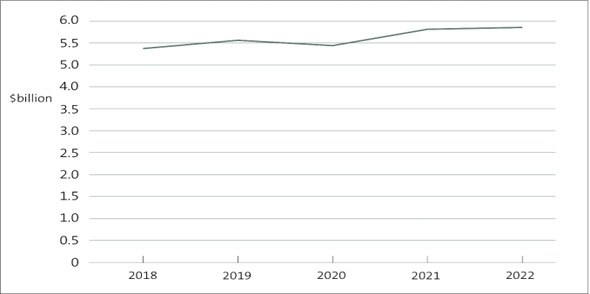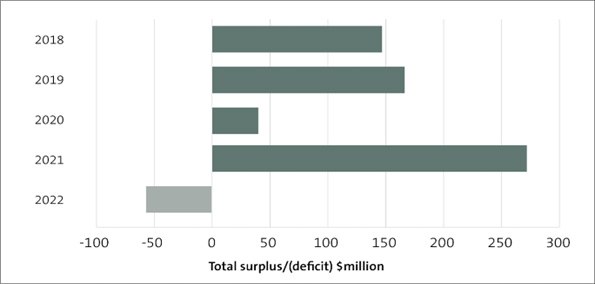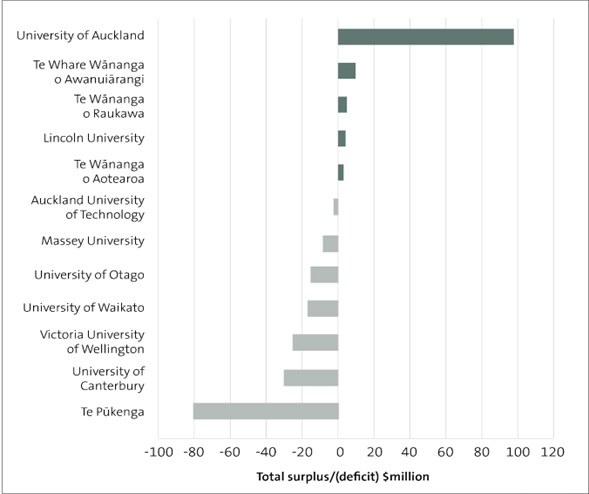Annex 3: Financial viability
Auditors are required to consider the on-going financial viability of TEIs during their audits. This is mainly done to confirm that the accounting basis used to prepare the financial statements and the performance statements is appropriate.
Changes in the basis of accounting will affect the value, recognition, and classification of assets, revenue, and expenses contained in the financial statements, as well as how service delivery is reported in performance information.
As outlined in Figure 6, the 31 December 2022 year-end saw seven of the 12 TEIs record a loss, some for the first time in more than 20 years. Historically, most TEIs made surpluses that were less than 3% of total revenue,4 although there was no specified target.
Figure 4 – Total sector revenue

Source: Tertiary Education Commission, Financial Performance.
Education Counts data shows that domestic enrolments, which provide a significant amount of revenue for the sector, fell by 12,640 equivalent full-time students (EFTS) in 2022. Domestic enrolments have fallen by a further 7335 in 2023.
These decreases could be attributed to the then stronger job market, which was enticing school leavers and students who were mid-study to leave or defer tertiary education. Domestic enrolments are not expected to significantly increase again until 2025, when there is an anticipated increase in school leavers.
Figure 5 – Total sector surplus/(deficit)

Source: Tertiary Education Commission, Financial Performance.
Figure 6 – Surplus/(deficit) by tertiary education institution in 2022

Source: Tertiary Education Commission, Financial Performance.
At the same time, international enrolments are slowly recovering after the pandemic. In 2022, a total of 28,995 international students had enrolled in TEIs, which was 19,899 fewer than in 2018. On 20 March 2024, the Minister for Tertiary Education and Skills released information that showed that 34,095 international students had enrolled in TEI the eight months to August 2023. The overall trends in student enrolments are shown in Figure 7.
Figure 7 - Student enrolments at tertiary education institutions, 2018 to 2022

Source: Education Counts Tertiary Participation.
Response to financial viability concerns
In response to financial viability concerns, the then Government announced in June 2023 an additional $128 million in funding to universities (spread out over two years) to subsidise domestic tuition fees. This was on top of a 5% funding increase announced in the Budget in May 2023.
The Government also announced there would be a review of the higher education funding system. On 15 April 2024, the University Advisory Group was established to provide the Government with advice on New Zealand’s university system. The Terms of Reference require the Group to consider challenges and opportunities for improvement in the university sector, including the role of the Performance Based Research Fund; ways to best achieve equity for all learners; and the role of international education. The Group will provide an initial report to the Government in August 2024 and a final report in February 2025.
In the meantime, many TEIs have announced staffing cuts and are implementing restructuring plans.
We will be providing the Committee with lines of inquiry to support its scrutiny of the TEC and the Ministry of Education in the select committee’s annual review process.
4: 3% is about the average amount costs rise in a normal year for education providers, and so this was used to provide a target for the sector.
